How Many Animals Are In The World Altogether
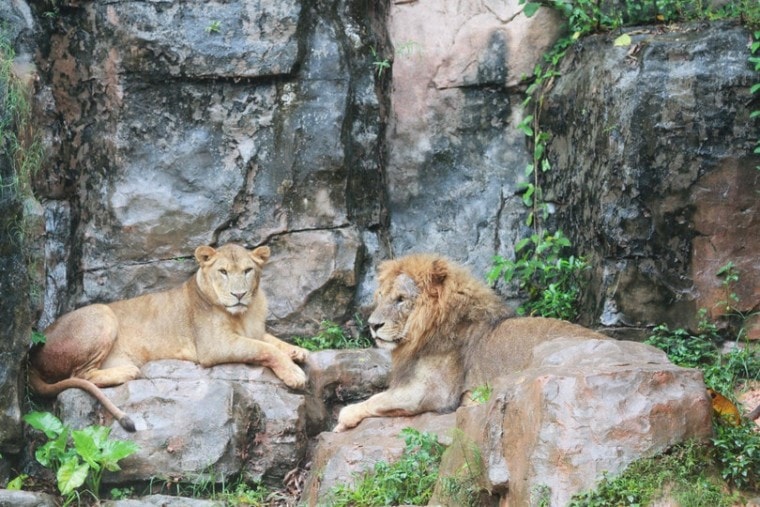
Note: This article'due south statistics come up from tertiary-political party sources and do not represent the opinions of this website.
We meet animals in captivity all the time in places like zoos and aquariums. But practice y'all really know what their lives are like? Likewise few people know what goes on behind the scenes of these places, but more than people should know the statistics on what life is like for animals in captivity.
Here are the 15 disheartening animals in captivity statistics, including:
- 5 General Statistics For Animals In Captivity
- three Animal Corruption in Captive Marine Life Statistics
- 4 Animal Abuse in Zoos Statistics
- 3 Circus Animal Abuse Statistics

The 15 Disheartening Animals in Captivity Statistics
- The U.South. contains more than captive tigers in zoos than there are tigers in the wild worldwide.
- Texas may be home to the second largest population of tigers due to individuals keeping them as pets.
- Animals living in captivity, such as zoos, parks, and aquariums, have very trivial in the mode of legal protection.
- Information technology'southward estimated that of all animals held by the Globe Clan of Zoos and Aquariums, 75% of them have been abused.
- Most places that are members of WAZA offer opportunities to pet animals — an activeness that causes much stress for captive animals.
- Aquariums that give performances, such as Sea World, often remove a calf from a mother'due south intendance long before they should.
- About marine animals held captive and bred aren't threatened or endangered species.
- Bottlenose dolphins who have been captured are more than likely to die immediately after.
- Polar bears have far less space than they need in zoos.
- Animal species considered "extremely threatened" shouldn't be bred in zoos.
- Zoo elephants die much younger than their wild counterparts.
- Zoos "cull" surplus animals.
- Circus animals spend most of the year living in too small-scale boxcars.
- Circus animals spend approximately 96% of their lives caged upward or chained.
- All the major U.S. circuses that utilise wildlife as entertainment have been cited for not meeting the minimum requirements for the standard of care put forth by the U.S. Animate being Welfare Deed.
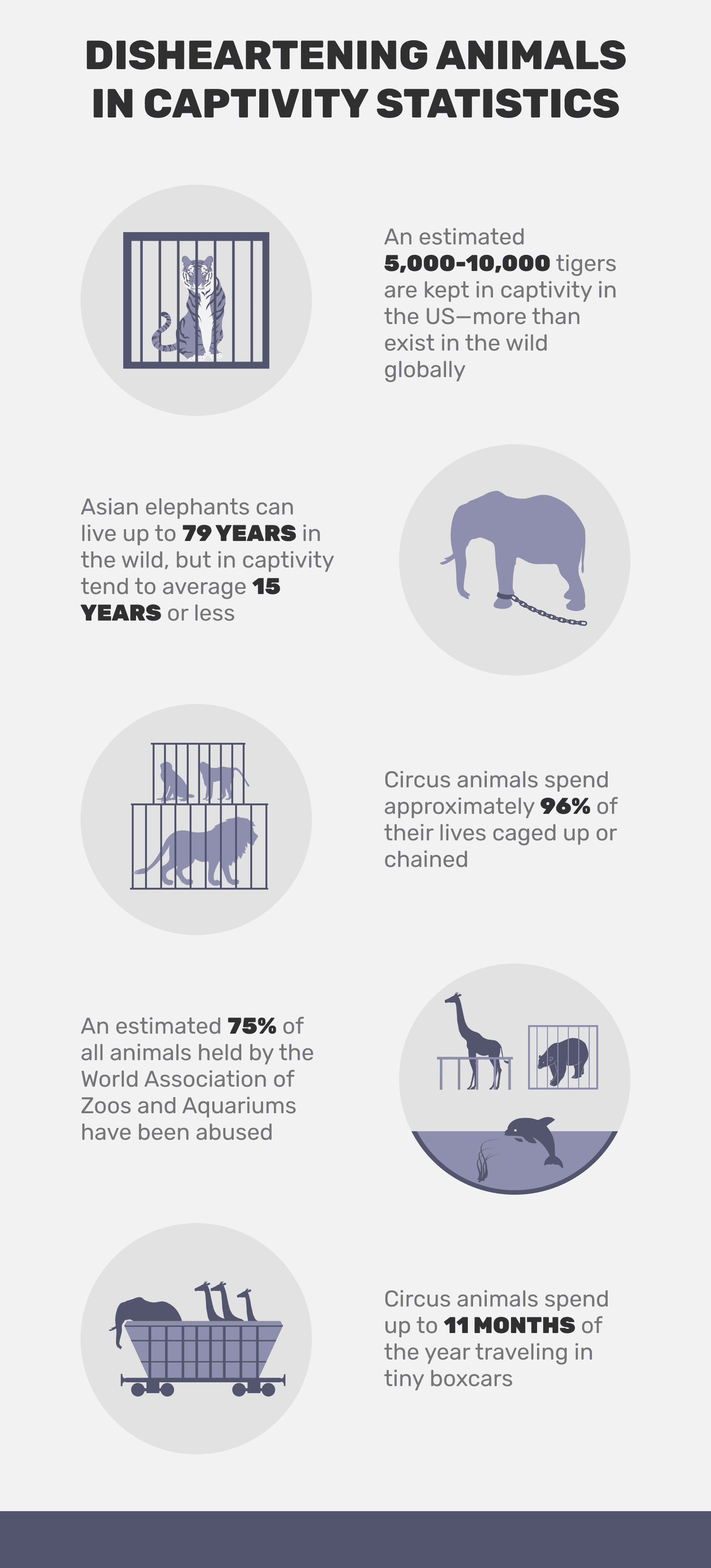

General Statistics For Animals In Captivity
1. The U.South. contains more than convict tigers in zoos than there are tigers in the wild worldwide.
(Built-in Free Us)
It'southward been estimated that fewer than 3500 tigers remain in the wild. Because their numbers have become so depression, their hereafter as wild animals has become precarious. But, in captivity in the U.South. alone, at that place are anywhere between 5000 and x,000.
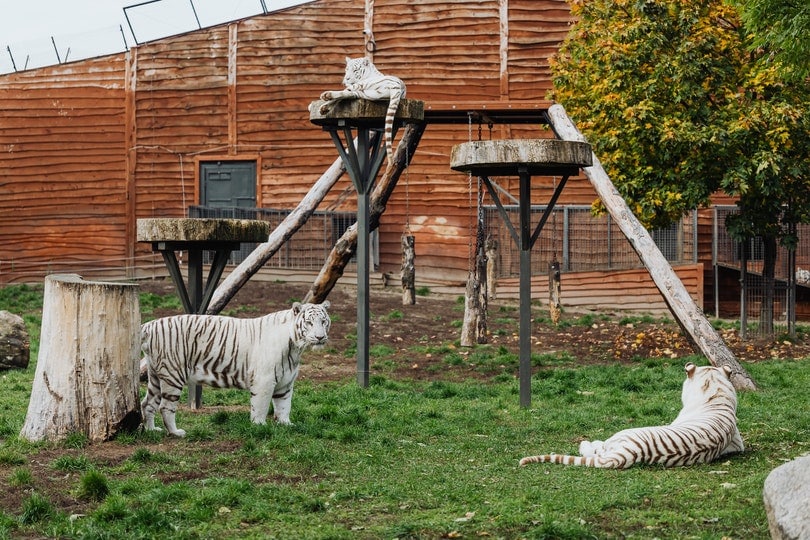
2. Texas may be home to the 2nd largest population of tigers due to individuals keeping them as pets.
(Animal Legal Defense Fund)
In that location isn't a wild animal demography, but information technology has been estimated that Texas has the 2nd largest tiger population —all due to private citizens who keep them as pets.
Non only is this dangerous (for both humans and the animals), simply wild fauna kept as pets ofttimes alive in terrible conditions because their owners don't know how to care for them.
There's also the fact that some people decide to brood wild cats with house cats to create a hybrid, resulting in horrible consequences.
3. Animals living in captivity, such every bit zoos, parks, and aquariums, accept very little in the way of legal protection.
(Beast Legal Defense Fund)
Only a few federal laws are designed to protect wildlife living in zoos, aquariums, etc.
The master federal law dealing with them is the Fauna Welfare Act (AWA), but even it only applies to some animals and not all. The AWA besides only covers the blank minimum when it comes to protections.
At that place is also the Convention on International Trade in Endangered Species of Wild Animate being and Flora (CITES). This international treaty was created to regulate wild animals trade. However, critics say that it offers less protection for those species that are valuable economically.
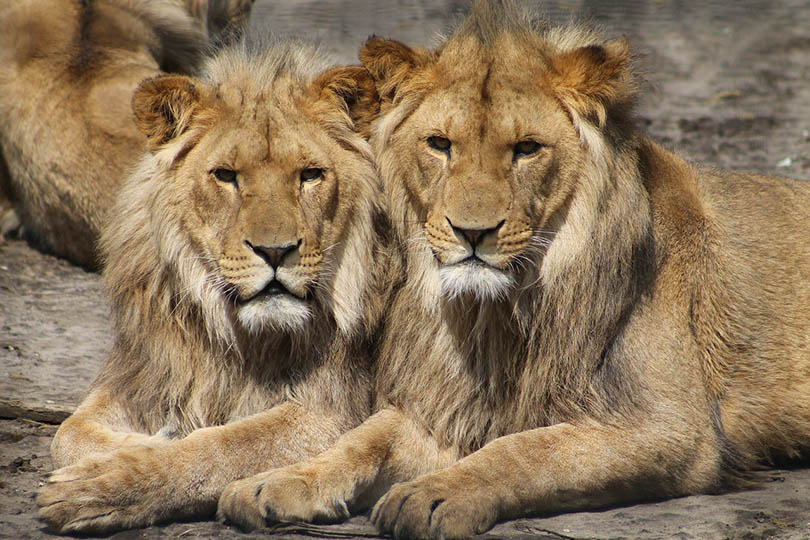
four. Information technology's estimated that of all animals held by the World Clan of Zoos and Aquariums, 75% of them have been abused.
(Earth Creature Protection)
The Globe Association of Zoos and Aquariums is, as the name indicates, a worldwide organization for zoos and aquariums. They offer guidelines for these places, including ones that dissuade cruelty to animals. One guideline says that members shouldn't accept animals engaging in "animal shows, displays, or interactive experiences where animals perform demeaning and unnatural behaviors."
Still, when World Creature Protection queried 1200 WAZA associated zoos and aquariums, they found that the majority participated in just those things.
five. Most places that are members of WAZA offer opportunities to pet animals — an action that causes much stress for convict animals.
(National Geographic)
Wild animals in captivity find being petted — and human contact in general — incredibly stressful. All the same, a National Geographic article discussing fauna corruption in zoos and aquariums institute that many offered activities involving humans interacting with convict animals.
In fact, around 33% of places associated with WAZA permit people swim or walk with animals.
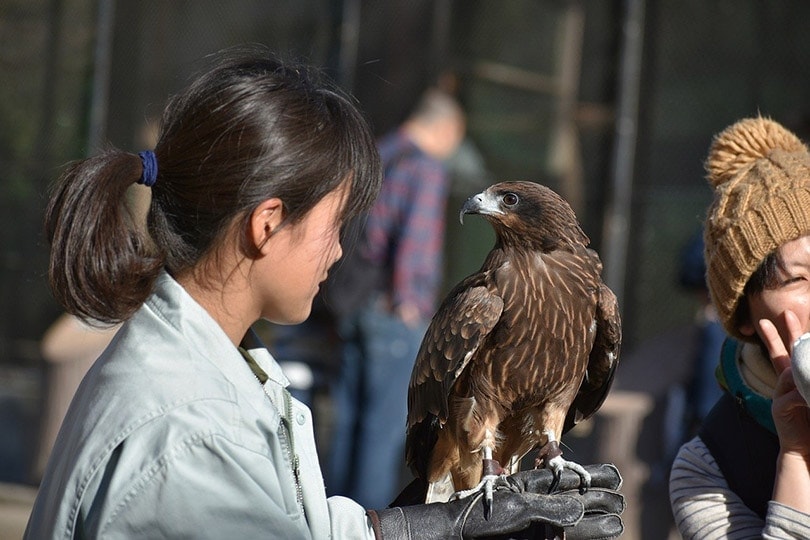
Brute Abuse in Captive Marine Life Statistics
6. Aquariums that give performances, such as Body of water World, often remove a calf from a mother'due south care long before they should.
(Dolphin Project) (NPR)
In the wild, babe dolphins and whales (known as calves) stay shut to their mother for 6 years or more. Just calves born into captivity are often taken from their mothers within months. Why? Because they need to be trained to do tricks and collaborate with humans.
One example of this is when Seaworld removed Sumar, a babe orca, from his female parent at 6 months, then moved him to a dissimilar state soon after.
7. Most marine animals held captive and bred aren't threatened or endangered species.
(Humane Society)
Aquariums or dolphinariums volition insist they are involved in conservation efforts to justify the animals they have, but most of the time, they are not involved in any conservation work. Instead, these animals are there to entertain and be bred, then replacement amusement animals are available when needed.

8. Bottlenose dolphins who accept been captured are more probable to die immediately after.
(World Brute Protection)
Afterward a bottlenose dolphin has been captured from the wild, information technology is six times more likely to die before long afterwards — unremarkably on the journey betwixt its natural habitat and its new residence.
Beast Abuse in Zoos Statistics
ix. Polar bears take far less infinite than they need in zoos.
(Freedom For Animals)
And they aren't the only ones. Almost animals in zoos have far, far less space available to roam than they would in the wild. Polar bears must bargain with having approximately 1 meg times less open space than they should have.
Lions and tigers besides peak the list of animals who aren't given enough space. They accept to put up with about 18,000 times less space than they would take in their natural habitats.
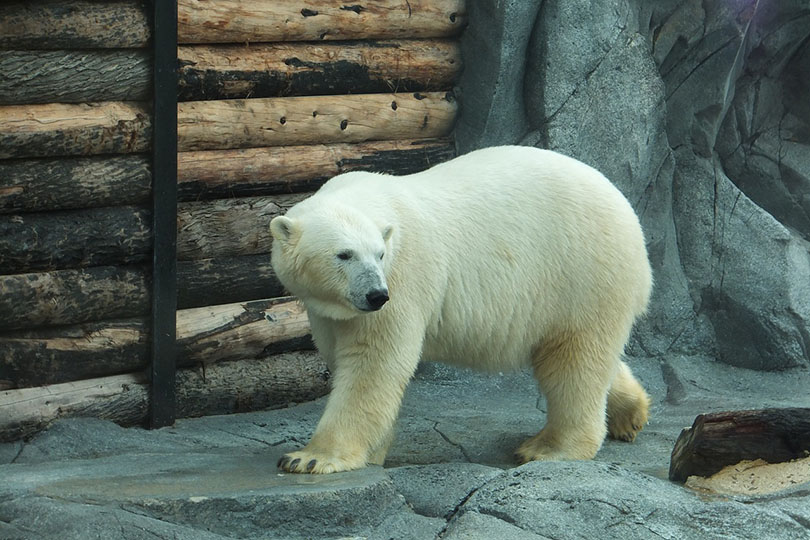
10. Animal species considered "extremely threatened" shouldn't be bred in zoos.
(Science Daily)
That doesn't mean they aren't, however. And, to be fair, convenance in captivity can exist used as a last-ditch effort to salvage a dying species. Equally Dr. Paul Dolman laid out in a 2015 study, the problem is that captive convenance won't help if a population can't be rebuilt in the wild.
And, oftentimes, with programs breeding these species in captivity, this doesn't occur for a diversity of reasons. However, animals being bred in captivity can destroy the desire and resources to care for those in the wild.
11. Zoo elephants dice much younger than their wild counterparts.
(RSPCA Science Group)
While, generally, animals in captivity accept longer lifespans than their counterparts in the wild (due to a lack of predators and less disease), a report by the RSPCA Scientific discipline group institute that in European zoos, elephants died much younger than those in the wild.
Wild Asian elephants take been reported to live upwardly to 79 years; African elephants upwardly to 65 years. These animals in captivity, however, tend to average xv and 16 years, respectively.
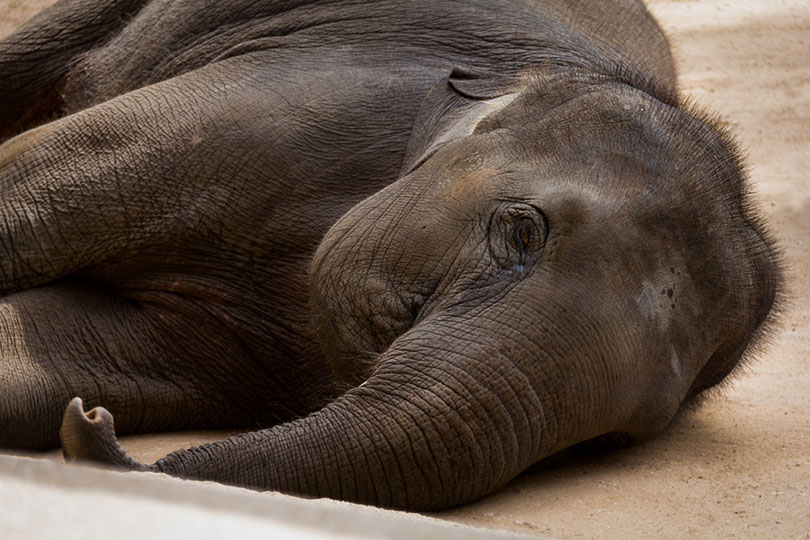
12. Zoos "choose" surplus animals.
(Wildlife Rescue & Rehabilitation) (IDAUSA)
Sometimes zoos breed more animals than they need, and those extra animals have to go somewhere. Unfortunately, they won't be released into the wild.
In some cases, these animals will be sold to laboratories, hunting facilities, shows, or even to people as pets.
In other cases, such equally in European zoos, animals are instead killed — even if they're whole and healthy.
Circus Creature Abuse Statistics
13. Circus animals spend nearly of the year living in as well small boxcars.
(People Helping Animals)
The circus moves from place to identify and is on the road a good portion of the time. This means that circus animals spend up to xi months of the year traveling with it — normally in boxcars that aren't temperature regulated, and where they are expected to sleep, go to the bathroom, and eat all in the same place.
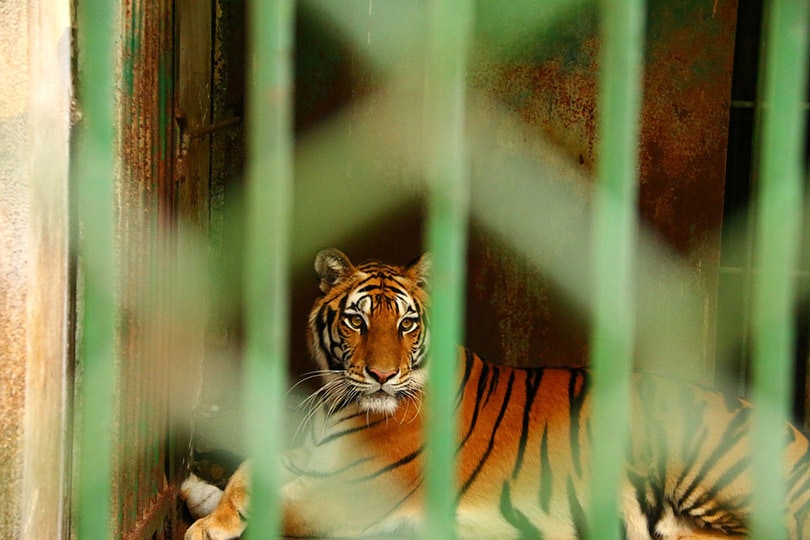
xiv. Circus animals spend approximately 96% of their lives caged up or chained.
(World Creature Protection)
It'due south not only when they're traveling that circus animals are locked up. They spend most of their lives in either cages or bondage.
This constant inability to motility around contributes to the meridian causes of death in elephants who are captive — arthritis and foot infections.
15. All the major U.S. circuses that utilise wild animals as entertainment accept been cited for not meeting the minimum requirements for the standard of intendance put along by the U.Due south. Animate being Welfare Act.
(Born Free United states)
This is partially because the law just covers minimal standard care for certain species and because the USDA — which is supposed to conduct inspections — does so infrequently. At that place accept also been complaints that these inspectors aren't adequately trained in what to look for.
Fifty-fifty worse? Violators of the U.S. Creature Welfare Act are often echo offenders.
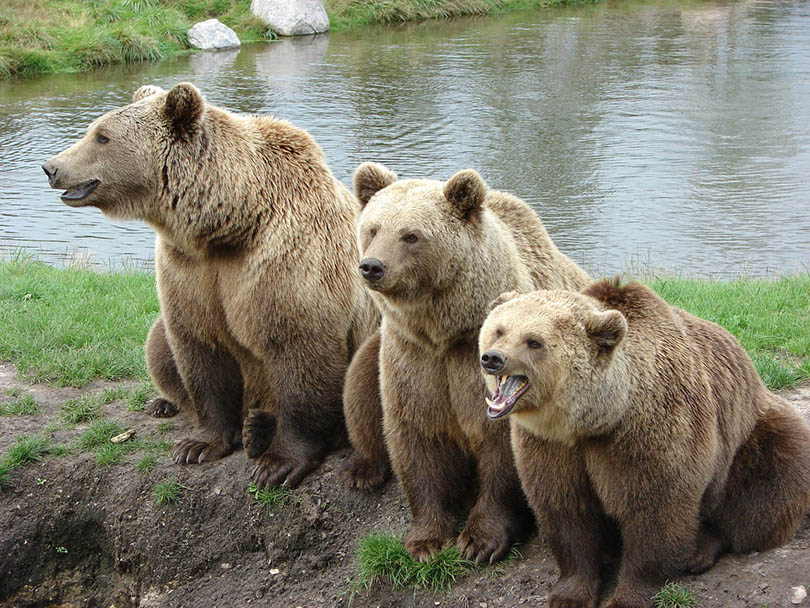

Frequently Asked Questions About Animals in Captivity
How Many Animals Are in Captivity?
Information technology'south difficult to say just how many wild animals are being kept in captivity across the spectrum of zoos, circuses, aquariums, as pets, and more.
However, we know that approximately one 1000000 vertebrate animals are kept captive in just zoos solitary. That's a lot!
The number of animals in captivity altogether will be much, much higher, though. (Animate being Ethics)
Do Animals in Captivity Suffer From Depression?
Given the circumstances they live in, many animals in captivity suffer from low and anxiety. The psychological consequences of how they live are seen in what is known as zoochosis.
Zoochosis is when animals engage in repetitive behaviors that serve no specific function. These behaviors can include excessive preparation, pacing or swaying, head bobbing, and neck twisting.
Zoochosis occurs from various aspects of captivity, such as existence forced to be idle and in one place constantly and the loss of a species normal social groups, among other things. (Wildlife New Zealand)
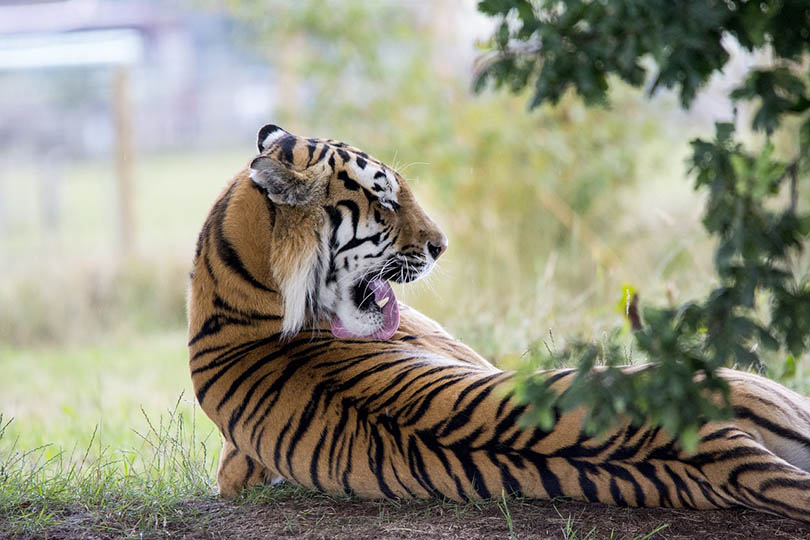
What Percent of Animals In Zoos are Endangered?
While an exact percent is hard to pivot down, co-ordinate to the Association of Zoos and Aquariums (AZA), amongst their members, there are about 900 species that accept been classified every bit anywhere from Vulnerable to Extinct by The International Marriage for Conservation of Nature (IUCN).
The AZA as well says that there are over 50 reintroduction programs for endangered and threatened species that the Endangered Species Deed has listed. (Association of Zoos and Aquariums)
How Many Animals Dice in Zoos Each Yr?
Unfortunately, this is another number that's difficult to track downwardly as zoos don't like to advertise animals dying.
Withal, In Defense of Animals gauge that at to the lowest degree anywhere between 3000 and 5000 surplus animals are killed in European zoos each year.
Add together to those accidental deaths and animals dying immature due to captivity, and you lot're looking at a lot. (In Defense of Animals)
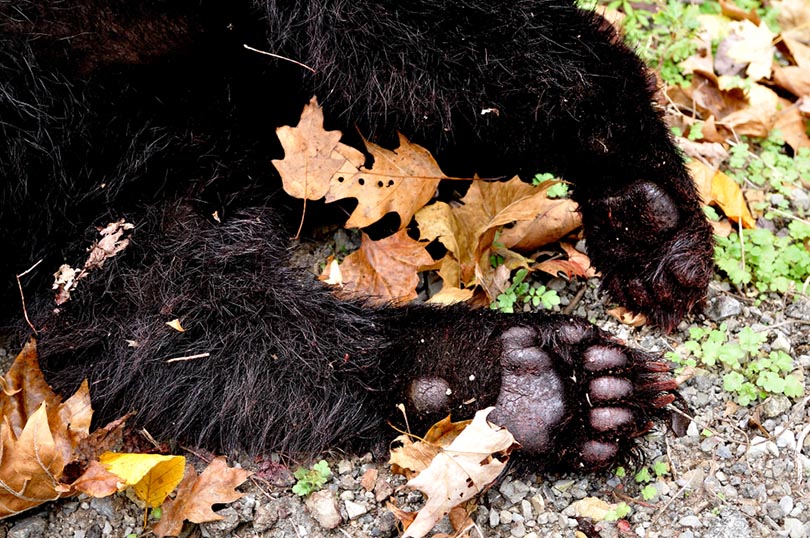
Are There Nonetheless Circuses That Apply Animals?
Unfortunately, yes, some circuses are even so using animals in their acts. The proficient news is that many no longer do (or accept shut down entirely, such every bit Ringling Bros).
But there are still a handful that use wild animals — mostly elephants and big cats. These include the Loomis Bros Circus, Culpepper & Merriweather Circus, and the Royal Hanneford Circus. (CompassionWorks International)
Related Read:20 Disturbing Animals Abuse Statistics & Facts to Know

Conclusion
The life of animals in captivity is heartbreaking, whether they exist in a zoo, aquarium, circus, or other confinement. While some places do some piece of work in conservation, the majority do non do equally much as they say they do (if at all). Overall, turn a profit is put over the lives of convict animals.
Information technology may seem like at that place isn't much you lot as an individual can do. Only now that you know just a few of the disheartening statistics, you tin avoid places that accept wild animals in captivity. Y'all tin too share this info, then more people know what these animals face.
Hopefully, one day — sooner rather than after — more people volition take discover of this state of affairs, and animals in captivity will be a thing of the past.
You may also be interested in:
- 10 Heartbreaking Canadian Endangered Species Statistics to Know
- thirteen Heartbreaking Statistics About Animals in Entertainment
Featured Image Credit: Mehmet Turgut Kirkgoz, Pexels
Source: https://petkeen.com/animals-in-captivity-statistics/
Posted by: couturesaut1950.blogspot.com

0 Response to "How Many Animals Are In The World Altogether"
Post a Comment